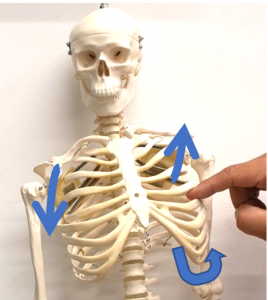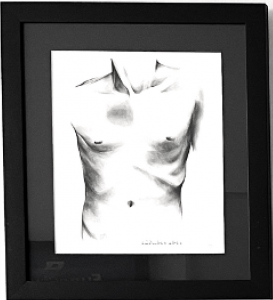BC: Brachial Chain
ポスチュラル・レストレーション・インスティテュート(PRI)によれば、ブラキアル・チェーン(BC)とは、前胸壁と頸部を覆う多関節筋群であり、呼吸、肩の動態、そして頸部の動きに影響を与えています。右側のBCパターンは支配的であり、通常、L AIC パターンと共存しています。これは、体がL AICパターンに対して体のバランスを相殺(代償)しようとするためです。
筋肉:前側面肋間筋、肩三角筋-胸筋、シブソン筋膜、胸骨三角筋、胸鎖乳突筋、斜角筋、横隔膜

右側のBCに関連する症状としてしばしば見られるものには、以下があります:
- 頸部痛
- 肩の痛み
- SLAP損傷(上方前後方の破損)
- 多方向性肩関節不安定
- 上腕二頭筋腱炎
- 腱炎
- 外側上顆炎(テニス肘)
- 内側上顆炎(ゴルフ肘)
- De Quervain腱鞘炎
- 胸郭出口症候群
- 肩甲-胸郭部の痛み(肩甲骨と脊柱の間の領域)
- 肋骨-胸骨接合部の痛み
- 胸骨-胸郭関節の痛み(鎖骨-肩甲骨関節および胸鎖関節)
- 肋間の痛み
- 肩甲骨のすべり症候群
- 常位性肩関節拘縮
BC: Brachial Chain
The Postural Restoration Institute defines the Brachial Chain (BC) as a polyarticular muscle group covering the anterior chest wall and cervical area, influencing breathing, shoulder dynamics, and neck movement. The right BC pattern is dominated and usually co-exists with the left AIC pattern as the body tries to counterbalance the system.
Muscles: Anterior-Lateral Intercostals, Deltoid-Pectoral, Sibson’s Fascia, Triangularis Sterni, Sternocleidomastoid, Scaleni, Diaphragm

Symptoms often associated with Right BC are:
- Neck pain
- Shoulder pain
- SLAP lesion (Superior Labrum Anterior Posterior Lesion)
- Glenohumeral Multidirectional Instability
- Biceps Tendinitis
- Tendinitis
- Lateral epicondylitis (Tennis elbow)
- Medial epicondylitis (Golf elbow)
- De Quervain tenosynovitis
- Thoracic outlet syndrome
- Scapulothoracic regional pain (Between the scapula and spine)
- Pain at the chest bone (Costosternal junctional pain)
- Sternothoracic joint pain (Acromioclavicular (AC) and Sternoclavicular (SC) joints)
- Intracostal pain (pain at between the ribs)
- Snapping scapula
- Adhesive capsulitis
PRI’s approach to the right brachial chain
The Postural Restoration approach for shoulder and neck pain focuses on the root cause of movement dysfunctions due to asymmetrical demands on the body. PRI therapists use various manual therapy techniques and exercises to restore proper alignment and function of the right brachial chain, which in turn can help to alleviate pain and improve overall posture and movement. The goal of PRI’s approach to the right brachial chain is to treat movement dysfunction and postural compensation, which optimizes the nerve and blood flow, reduces tension and irritation, and improves the overall health and function of the upper limb.
Overactive muscles: Left Pec Major, Right Pec Minor, Right Latissimus Dorsi